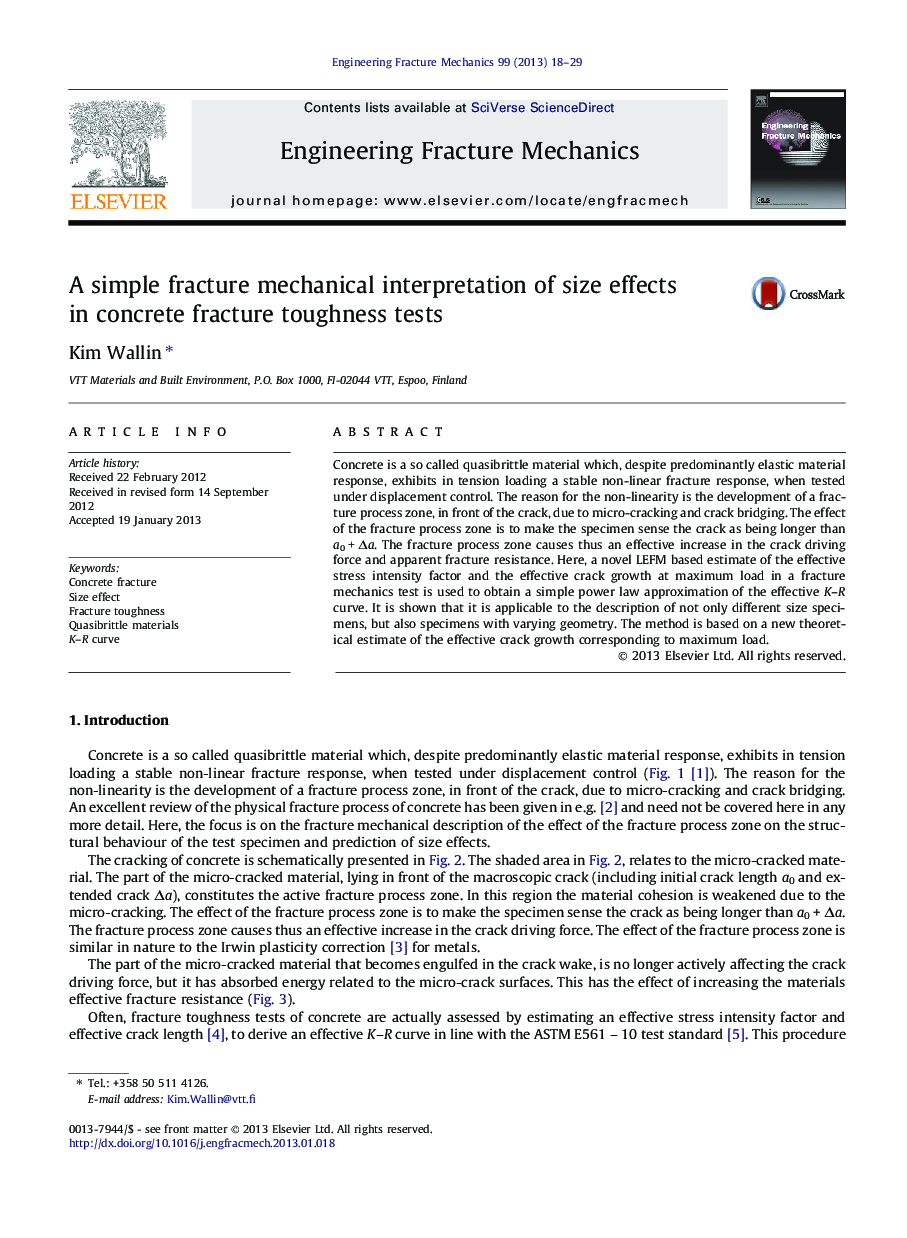| Article ID | Journal | Published Year | Pages | File Type |
|---|---|---|---|---|
| 775039 | Engineering Fracture Mechanics | 2013 | 12 Pages |
Concrete is a so called quasibrittle material which, despite predominantly elastic material response, exhibits in tension loading a stable non-linear fracture response, when tested under displacement control. The reason for the non-linearity is the development of a fracture process zone, in front of the crack, due to micro-cracking and crack bridging. The effect of the fracture process zone is to make the specimen sense the crack as being longer than a0 + Δa. The fracture process zone causes thus an effective increase in the crack driving force and apparent fracture resistance. Here, a novel LEFM based estimate of the effective stress intensity factor and the effective crack growth at maximum load in a fracture mechanics test is used to obtain a simple power law approximation of the effective K–R curve. It is shown that it is applicable to the description of not only different size specimens, but also specimens with varying geometry. The method is based on a new theoretical estimate of the effective crack growth corresponding to maximum load.
► A simple two parameter description of the effective fracture resistance. ► Describes the specimen size effect on maximum load. ► Describes the effect of initial crack length on the maximum load values. ► A simple classification of the fracture process zone evolution is enabled. ► Applicable with the double-K criterion for initiation.
